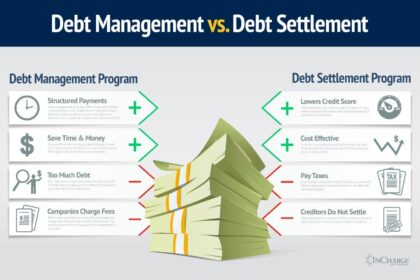In the ever-evolving landscape of finance, where market dynamics shift like the tides, the quest for robust investment strategies has become more vital than ever. Navigating this complex terrain requires not only knowledge but also a blend of intuition and analytical prowess. Whether you are a seasoned investor or a newcomer seeking to build your wealth, understanding the myriad approaches to investment can unlock doors to potential prosperity. In this article, we will explore a spectrum of strategies, from the time-tested principles of value investing to the innovative realms of sustainable and impact investments. Join us as we demystify the art and science of making informed investment choices, empowering you to chart your own course in the world of finance.
Budgeting Tips
When it comes to managing your finances, effective budgeting serves as the cornerstone of any successful investment strategy. Begin by tracking your income and expenses meticulously. Utilize tools like spreadsheets or budgeting apps to help visualize your spending habits. This allows you to identify areas where you can cut back. Consider following these guidelines:
- Set clear financial goals: Know what you want to achieve—whether it’s saving for retirement, a home, or an emergency fund.
- Prioritize savings: Treat your savings like a recurring bill; set aside a portion of your income immediately.
- Monitor your progress: Regularly review your budget to make necessary adjustments.
Once you have your budgeting in place, it’s time to look at how to allocate your savings. Diversifying your investments can significantly impact your financial outcomes. Here’s a simple table outlining common investment types and their risk levels:
| Investment Type | Risk Level |
|---|---|
| Stocks | High |
| Bonds | Moderate |
| Real Estate | Moderate |
| Savings Accounts | Low |
Stay informed about each investment vehicle and tailor your strategies according to your financial goals and risk tolerance. Balancing your budget effectively will empower you to confidently dive into the investment landscape.

Debt Management
Effective financial planning often requires a keen understanding of managing obligations while seeking growth opportunities. Implementing sound strategies to balance debt can significantly enhance your overall investment portfolio. A few methods to consider include:
- Debt Consolidation: Combine multiple debts into a single loan for simplified payments and potentially lower interest rates.
- Budgeting: Regularly track expenses and income to identify areas for reduction and allocate more funds toward debt repayment.
- Prioritizing High-Interest Debt: Focus on paying off debts with the highest interest rates first to minimize cost over time.
In addition to managing existing debt, leveraging your financial position effectively can lead to investment opportunities that may offset your liabilities. A balanced approach may include:
- Investing in Low-Risk Assets: This can provide steady returns while maintaining liquidity to handle debt obligations.
- Emergency Fund Creation: Building a safety net allows for unexpected expenses without further accumulating debt.
- Regular Financial Review: Periodically assess your financial landscape to adapt strategies as circumstances change.

Saving for Retirement
As you embark on your journey towards securing a comfortable retirement, it’s essential to employ a range of effective investment strategies tailored to your unique financial situation. Begin by establishing a strong foundation with diversified asset allocation. This comprises multiple asset classes, minimizing risks while maximizing potential returns. Consider the following options to create a balanced portfolio:
- Stocks: Growth potential and dividends
- Bonds: Stability and fixed income
- Real Estate: Tangible asset and rental income
- Mutual Funds: Professional management and diversification
Another crucial tactic for building your retirement savings is to harness the power of compounding. The sooner you start saving, the more you benefit from this compounding effect. To illustrate this, consider the following table that compares different starting ages and their impact on retirement savings:
| Starting Age | Monthly Contribution | Projected Retirement Savings at 65 |
|---|---|---|
| 25 | $200 | $1,071,037 |
| 35 | $300 | $511,578 |
| 45 | $500 | $238,891 |
As shown, early contributions can lead to significant growth over time, highlighting the importance of beginning your investment journey as early as possible to maximize your retirement funds.

Emergency Fund Planning
Creating a safety net through a well-planned emergency fund is a pivotal component in any financial strategy. This fund serves as a buffer against unexpected expenses, ranging from medical emergencies to job loss. To build a robust emergency fund, consider the following essentials:
- Set a Target Amount: Aim for three to six months’ worth of living expenses.
- Choose the Right Account: Utilize high-yield savings accounts for better interest rates.
- Automate Contributions: Set up automatic transfers to ensure consistent savings.
As you create this financial cushion, it’s equally important to regularly assess and adjust your contributions according to changes in your circumstances. Additionally, adopting a disciplined approach can enhance your commitment to this goal. Consider employing these effective tactics:
| Tactic | Description |
|---|---|
| Monthly Check-ins | Review your fund to track progress and adjust savings as needed. |
| Expense Monitoring | Evaluate monthly expenses to identify potential areas for savings. |
| Emergency Fund Goals | Set mini-goals to make building your fund more manageable. |
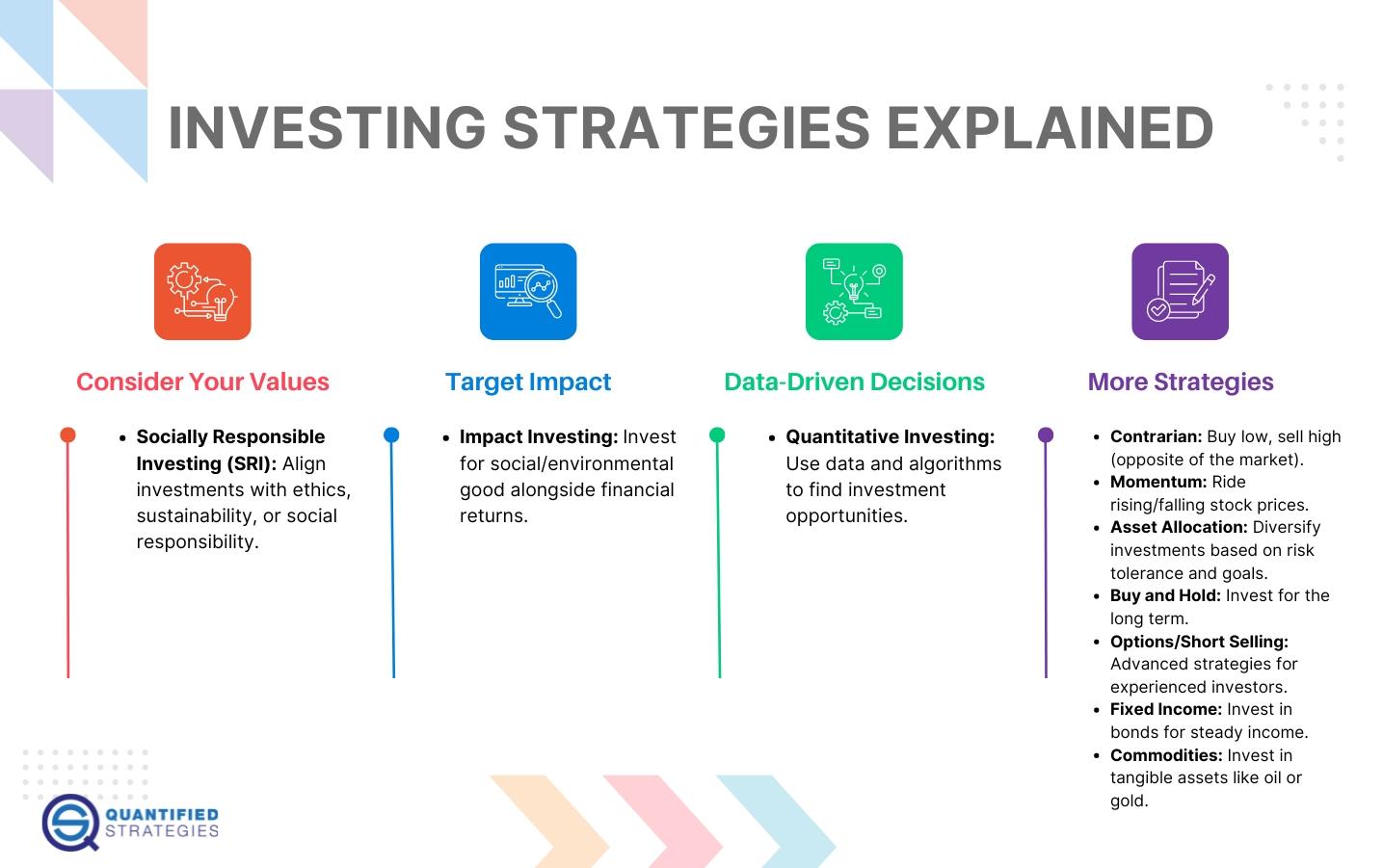
Investment Strategies
Adopting the right can significantly enhance your financial growth and stability. Diversification stands out as a fundamental approach that helps mitigate risk by spreading investments across various asset classes. Consider incorporating the following strategies into your investment plan:
- Equities: Invest in stocks to capture capital appreciation and dividends.
- Bonds: Allocate funds to fixed-income securities for steady returns.
- Real Estate: Explore property investments for tangible assets and income streams.
- Mutual Funds: Leverage professionally managed portfolios for greater diversification.
- Exchange-Traded Funds (ETFs): Utilize ETFs for intraday trading flexibility with lower fees.
Another essential strategy is the practice of value investing, where you seek undervalued stocks expected to rise in price over time. Key principles of value investing may include:
| Principle | Description |
|---|---|
| Fundamental Analysis | Evaluate a company’s financial health and future earnings potential. |
| Margin of Safety | Invest with a buffer to minimize potential losses. |
| Long-Term Focus | Hold investments for several years to enable growth realization. |

Stock Market Investing
When it comes to investing in the stock market, having a solid understanding of various strategies can significantly impact long-term success. Some popular approaches include:
- Value Investing: Focuses on finding undervalued stocks with strong fundamentals.
- Growth Investing: Targets companies poised for substantial growth, often in emerging sectors.
- Momentum Investing: Capitalizes on existing market trends, buying stocks showing upward momentum.
- Dividend Investing: Prioritizes stocks that provide regular dividend payments, offering both income and the potential for capital appreciation.
Additionally, diversification is crucial in managing risk. By spreading investments across various sectors and asset classes, investors can protect their portfolios from market volatility. A sample allocation strategy might look like this:
| Asset Class | Allocation (%) |
|---|---|
| Stocks | 60 |
| Bonds | 30 |
| Cash/Cash Equivalents | 10 |

Real Estate Investment
Investing in real estate is not just about buying properties; it’s about crafting a strategy that aligns with your financial goals and risk tolerance. Some prevalent strategies include:
- Buy and Hold: Acquiring properties to rent out, generating ongoing income.
- Fix and Flip: Purchasing distressed properties, renovating them, and selling for profit.
- Trusts (REITs): Investing in a company that owns and manages income-producing real estate.
- Short-Term Rentals: Leveraging platforms like Airbnb to maximize rental income.
Each of these strategies requires careful consideration and market analysis. When evaluating potential returns, consider developing a simple comparison table to clarify the advantages and drawbacks of each approach:
| Strategy | Pros | Cons |
|---|---|---|
| Buy and Hold | Steady income, long-term appreciation | Requires patience, market volatility |
| Fix and Flip | Quick profits, hands-on involvement | High risk, requires expertise |
| REITs | Liquidity, diversified portfolio | Market fluctuations, management fees |
| Short-Term Rentals | Higher income potential, flexibility | Management-intensive, seasonal demand |
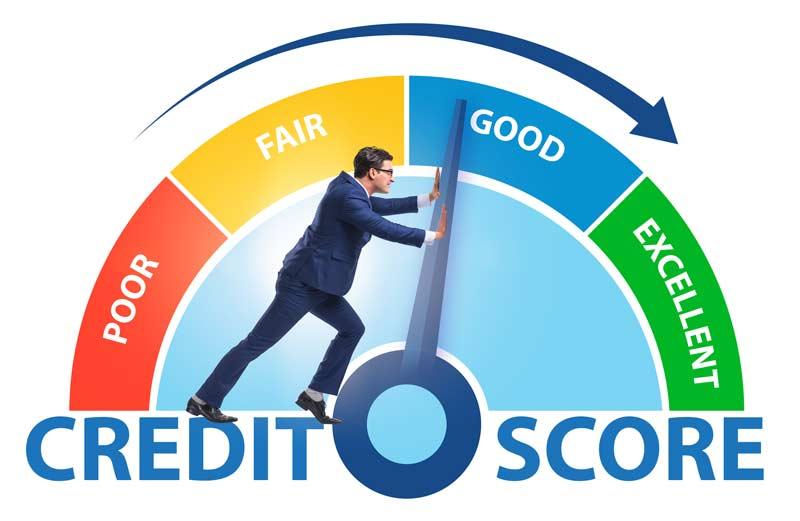
Credit Score Improvement
Improving your credit score can significantly impact your overall financial health, particularly when it comes to securing investments. A higher score not only enhances your eligibility for loans but also offers more favorable interest rates, ultimately affecting your investment potential. Focus on these key aspects to elevate your credit score:
- Pay bills on time: Consistent and timely payments demonstrate reliability to creditors.
- Reduce debt utilization: Aim to keep your credit utilization below 30% of your total available credit.
- Check your credit report: Regularly review for errors or inaccuracies that could lower your score.
- Avoid opening too many new accounts: Each credit inquiry can have a negative effect on your score.
Establishing a strong credit history is essential as it instills confidence among lenders, which can play a pivotal role in your investment journey. Consider these strategies to maintain a robust profile:
| Strategy | Potential Impact |
|---|---|
| Automatic Payments | Prevents late payments, boosting your score. |
| Credit Mix | Diverse credit accounts can enhance your score. |
| Long-Term Accounts | Keeping old accounts open improves your average account age. |
| Limit Hard Inquiries | Minimizing inquiries helps maintain your score. |

Financial Independence
Achieving requires a strategic approach to investing that aligns with your personal goals and risk tolerance. Diversification is a key principle; by spreading your investments across various asset classes, you can minimize risk while maximizing potential returns. Consider allocating your portfolio among the following categories:
- Stocks: High growth potential, but comes with more volatility.
- Bonds: Offers stability and regular income streams.
- Real Estate: Tangible asset that can provide passive income.
- ETFs & Mutual Funds: Access to a broad spectrum of investments with professional management.
In addition to diversification, implementing a long-term strategy can significantly enhance your path to financial freedom. Regular contributions to retirement accounts, such as 401(k)s or IRAs, can be a smart way to leverage compound interest. Below is a simple table that demonstrates the power of starting early with consistent investments:
| Years Invested | Initial Investment | Estimated Return (5% Interest) |
|---|---|---|
| 10 | $5,000 | $8,144 |
| 20 | $5,000 | $13,207 |
| 30 | $5,000 | $21,610 |

Passive Income Streams
Building a portfolio that generates passive income can enhance financial security and provide opportunities for wealth growth. Among the most effective strategies are real estate investments, where rental properties yield ongoing monthly cash flow, and dividend stocks, which offer regular payouts simply for holding shares. Here are some other avenues to consider:
- Peer-to-peer lending: Invest in platforms that allow you to lend money to individuals or small businesses.
- High-yield savings accounts: While not explosive in growth, they provide a steady return without the risk.
- Investing in index funds: These funds typically earn dividends and grow over time with market performance.
Another innovative approach to enhance your passive income includes creating digital products, such as e-books or online courses. Once produced, these assets continue to generate income with little additional effort. Alternatively, consider establishing a blog or YouTube channel, where ad revenue and affiliate marketing schemes can provide ongoing earnings with the potential to reach a global audience. Review the simple table below for more ideas:
| Income Source | Potential Returns |
|---|---|
| Real Estate Rentals | 5-10% ROI |
| Dividend Stocks | 2-6% annually |
| Peer-to-Peer Lending | 5-12% interest |
| Digital Products | Variable; high profit margin |

Tax Planning
Effective management of your tax obligations can significantly enhance your investment returns. To make the most of your financial strategies, consider tax-efficient investment vehicles. These may include:
- Tax-deferred accounts, such as Traditional IRAs and 401(k)s
- Health Savings Accounts (HSAs), which can serve as both a health and retirement investment tool
- Municipal bonds, which often come with tax advantages
By prioritizing these options, you can defer taxes and allow your investments to grow more effectively over time.
Additionally, it’s crucial to understand capital gains taxes and how they can impact your overall returns. Investors can benefit from holding assets for longer periods to take advantage of lower long-term capital gains rates. To illustrate this, consider the following comparison of capital gains tax treatment:
| Holding Period | Tax Rate |
|---|---|
| Less than 1 year | Ordinary Income Rate (up to 37%) |
| 1 year or more | 0%, 15%, or 20% depending on taxable income |
By strategically managing your investment horizon, you can optimize your tax position and retain more of your hard-earned income, paving the way for greater financial stability and growth.
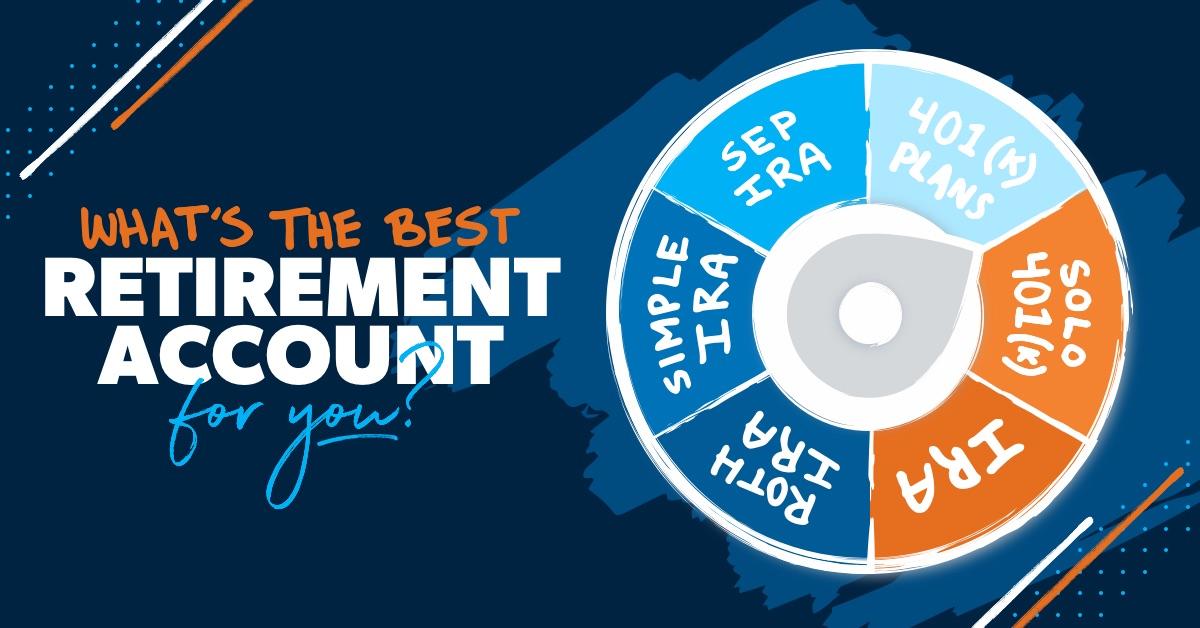
Retirement Accounts (IRA, 401k)
Retirement accounts, such as IRAs and 401(k)s, are essential vehicles for building a secure financial future. These accounts offer tax advantages that can significantly enhance your investment growth over time. By contributing regularly to an IRA or a 401(k), you not only benefit from tax-deferred or tax-free growth, but also take advantage of employer matching contributions, if available. To maximize your retirement savings, consider these strategies:
- Start Early: The sooner you begin saving, the more time your money has to compound.
- Diversify Investments: Ensure a mix of stocks, bonds, and other assets to mitigate risk.
- Increase Contributions: Gradually raise your contributions as your income grows.
- Monitor and Adjust: Regularly review your investments and adjust based on market conditions and life changes.
Additionally, understanding the differences between traditional and Roth accounts can play a crucial role in your retirement planning. A traditional account provides tax benefits on contributions, while Roth accounts allow for tax-free withdrawals in retirement, assuming certain conditions are met. Below is a simple comparison table to illustrate these key differences:
| Feature | Traditional IRA/401(k) | Roth IRA/401(k) |
|---|---|---|
| Tax on Contributions | Tax-deductible | After-tax |
| Tax on Withdrawals | Taxable | Tax-free |
| Required Minimum Distributions | Yes, 72 | No |
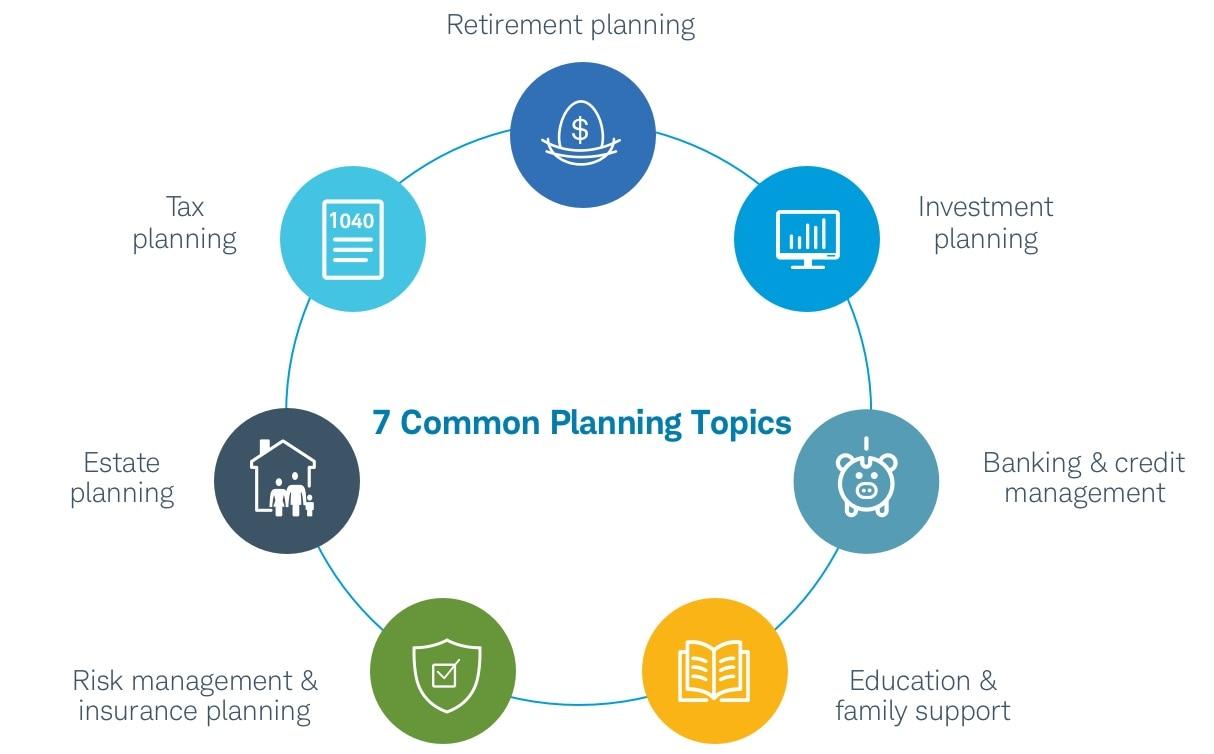
Financial Planning for Families
Creating a robust financial future for your family requires a well-thought-out investment approach. Diversification is key; by spreading your assets across various investment vehicles, you minimize risk while potentially enhancing returns. Consider allocating funds into different categories such as:
- Stocks: Invest in a mix of growth and value stocks.
- Bonds: Incorporate government and corporate bonds for stability.
- Real Estate: Look into rental properties or REITs for passive income.
- Mutual Funds/ETFs: Leverage managed funds for a broader market exposure.
To effectively manage investments, families should also establish a clear investment timeline. Breaking it down into short, medium, and long-term goals can help in deciding where to allocate resources. Below is a simple table illustrating how some common investment types align with different time horizons:
| Investment Type | Short-Term | Medium-Term | Long-Term |
|---|---|---|---|
| High-Interest Savings Account | ✔️ | ||
| Bond Funds | ✔️ | ||
| Index Funds | ✔️ | ||
| Stocks | ✔️ | ✔️ |

Personal Finance Apps
In today’s increasingly digital world, have become essential tools for managing investments efficiently. These applications offer users the ability to monitor their portfolios, analyze spending habits, and stay on top of market trends—all from the convenience of their smartphones. Some of the most popular options include:
- Mint – A comprehensive budgeting tool that also tracks investments.
- Robinhood – Offers commission-free trading for stocks, ETFs, and cryptocurrencies.
- Acorns – An app that invests your spare change automatically.
Utilizing these apps can streamline your investment strategy by enabling you to make informed decisions based on real-time data. To help you evaluate various platforms, here’s a simple comparison:
| App Name | Key Feature | Best For |
|---|---|---|
| Mint | Budgeting & tracking | Overall finance management |
| Robinhood | Commission-free trading | Stock market beginners |
| Acorns | Automated investing | New investors |

Student Loan Repayment
Managing effectively is crucial for maintaining financial health, especially when considering your broader investment strategies. To make your payments more manageable, consider income-driven repayment plans that fit your budget, allowing you to invest your extra funds elsewhere. Explore diversification to minimize risk, and think about refinancing options that might lower your interest rates, freeing up cash to invest. Keeping the following pointers in mind can help streamline your repayment journey:
- Choose the right repayment plan based on income
- Make extra payments towards the principal balance when possible
- Consider refinancing to reduce interest rates
- Stay informed about federal loan forgiveness programs
Understanding the relationship between your student loans and investment opportunities can pave the way for a more secure financial future. Balancing repayment with investment requires strategic planning. A basic financial model might help you keep track of repayments while still contributing to savings or retirement accounts. Below is a simple comparison table to illustrate how allocating funds towards loan repayment versus investment can affect long-term wealth accumulation:
| Action | Monthly Allocation | After 5 Years ($) | After 10 Years ($) |
|---|---|---|---|
| Loan Repayment | $300 | $18,000 | $36,000 |
| Investing | $300 | $20,000 (estim.) | $50,000 (estim.) |

Debt-Free Journey
Embarking on a financial journey often entails more than just eliminating debt; it involves building wealth through smart investment strategies. By reallocating the funds once used for debt payments, you can create a diversified portfolio that not only protects your financial future but also accelerates your wealth-building efforts. Here are some key principles to consider:
- Diversification: Spread your investments across different asset classes to minimize risk.
- Index Funds: These funds offer a low-cost way to invest in a broad market index, giving you exposure to various companies.
- Emergency Fund: Before diving deep into investments, ensure you have a safety net to cover unforeseen expenses.
Additionally, it’s important to establish clear investment goals. Goals can vary based on life stages and financial aspirations. Whether it’s saving for a home, planning for retirement, or funding a child’s education, having defined objectives allows for more targeted investment choices. Consider using the following table to outline your goals and their timelines:
| Goal | Target Amount | Timeframe |
|---|---|---|
| Emergency Fund | $10,000 | 1 Year |
| Home Purchase | $50,000 | 5 Years |
| Retirement Savings | $500,000 | 30 Years |

Credit Card Management
Effective is essential for building a solid financial foundation, especially when diversifying your investment portfolio. To optimize your credit card usage, consider the following strategies:
- Know Your Limits: Understanding your credit limit helps you make informed spending decisions.
- Pay Your Balance: Aim to pay off your balance in full each month to avoid interest charges.
- Utilize Rewards: Capitalize on cash back or reward points for investments or savings.
Keeping track of your credit usage not only improves your credit score but also provides you with leverage when seeking loans for investment purposes.
Additionally, being mindful of credit utilization is crucial. Ideally, you should keep your utilization rate below 30%. This can be easily managed by:
| Strategy | Benefit |
|---|---|
| Using Multiple Cards | Diversifies your total available credit. |
| Setting Up Alerts | Helps manage due dates and spending limits. |
| Regularly Reviewing Statements | Detects fraudulent activity and spending patterns. |
By refining your , you create a more stable environment for your investments to flourish.

Budgeting for Freelancers
For freelancers, effective financial management goes beyond just getting paid; it’s about optimizing your earnings and planning for the future. Creating a budget is essential to ensure that you can cover your living expenses, invest in your business, and set aside savings. A well-structured budget typically includes fixed expenses (like rent and insurance), variable expenses (such as groceries and entertainment), and savings. Keeping a close eye on your monthly spending allows you to identify potential cuts and reallocations so that more funds can support your investments.
One useful approach to managing your finances is the 50/30/20 rule, which suggests that you allocate 50% of your income to necessities, 30% to discretionary spending, and 20% to savings and debt repayment. This method can be tailored to suit the ebb and flow of freelance income, which often varies month by month. Consider creating a table for your budgeting categories to visualize your allocations:
| Category | Percentage | Monthly Amount (Based on $4,000 Income) |
|---|---|---|
| Necessities | 50% | $2,000 |
| Discretionary | 30% | $1,200 |
| Savings/Debt Repayment | 20% | $800 |

Frugal Living Tips
Being strategic about your finances doesn’t always mean heavy spending. In fact, frugal living can enhance your investment strategy by allowing you to allocate more funds towards growth opportunities. Consider the following tactics to maximize your investments while minimizing unnecessary expenses:
- Automate Savings: Set up automatic transfers to your investment accounts to ensure you prioritize savings without thinking about it.
- Utilize Cash Back and Rewards Programs: Take advantage of cash back offers to fuel your investment capital.
- DIY Projects: Instead of hiring out for repairs or improvements, learn the skills to manage them yourself, keeping more cash available for investing.
Moreover, staying informed can significantly reduce costs and increase the value of your investment decisions. Educate yourself on financial markets by leveraging free resources:
| Resource | Type | Cost |
|---|---|---|
| Online Courses | Education | Free |
| Podcasts | Media | Free |
| Investment Blogs | Research | Free |

Side Hustles for Extra Income
If you’re looking to boost your financial stability, exploring alternative avenues for income can be both rewarding and flexible. Here are some popular options that can seamlessly fit into your schedule:
- Freelancing: Offer your skills in writing, graphic design, or programming on platforms like Upwork or Fiverr.
- Online Tutoring: Share your expertise in subjects you love using sites such as VIPKid or Tutor.com.
- Blogging: Create content around your passions and monetize through ads, affiliate links, or sponsorships.
- Rental Properties: Earn passive income by renting out spare rooms or investments in real estate.
Diversifying your income streams is essential for financial health. Consider the following investment strategies to enhance your earnings:
| Strategy | Risk Level | Potential Returns |
|---|---|---|
| Stocks | Moderate | High |
| Bonds | Low | Moderate |
| Real Estate | Moderate | High |
| Peer-to-Peer Lending | Moderate to High | Variable |

Financial Literacy Education
Understanding different investment strategies is essential for making informed financial decisions. Each strategy bears its own risks and benefits, tailored to align with individual financial goals and risk tolerance. Here are some common approaches that investors may consider:
- Value Investing: Focuses on undervalued stocks with strong fundamentals.
- Growth Investing: Targets companies expected to grow at an above-average rate.
- Index Fund Investing: Involves buying a portfolio that mimics a market index, aiming for overall market returns.
- Dividend Growth Investing: Seeks stocks that offer consistent and increasing dividends.
While exploring these strategies, it’s crucial to develop a solid understanding of personal finances and market conditions. Here’s a simple comparison of some popular strategies based on risk and return potential:
| Strategy | Risk Level | Return Potential |
|---|---|---|
| Value Investing | Medium | Moderate to High |
| Growth Investing | High | High |
| Index Fund Investing | Low to Medium | Moderate |
| Dividend Growth Investing | Medium | Moderate |

Insurance Planning
When crafting a robust financial portfolio, it is essential to consider how insurance can play a pivotal role in safeguarding your assets and ensuring a steady flow of income. allows you to mitigate risks that could derail your long-term goals by providing security against unforeseen events. Whether it’s life insurance that protects your family’s future or health insurance that covers medical expenses, having the right policies in place can offer peace of mind and enhance your investment strategy.
In addition to traditional insurance policies, there are numerous financial products that blend investment and insurance features. These can include whole life insurance, universal life policies, and variable universal life insurance, which not only provide death benefits but also accumulate cash value over time. Here’s a quick comparison of these options:
| Policy Type | Investment Component | Flexibility |
|---|---|---|
| Whole Life Insurance | Guaranteed cash value growth | Low flexibility |
| Universal Life Insurance | Interest rates influenced by market | Medium flexibility |
| Variable Universal Life Insurance | Investment options in market funds | High flexibility |
Incorporating these financial tools into your overall investment strategy not only bolsters your protection against risks but also leverages your money’s potential for growth. As you navigate your options, consider your unique financial situation, risk tolerance, and long-term goals to create a comprehensive plan that secures your future while maximizing investment returns.

Long-Term Wealth Building
Building wealth over the long term requires a strategic approach, blending patience with informed decision-making. Diversification is a fundamental principle that can mitigate risks and enhance returns. By spreading investments across different asset classes—such as stocks, bonds, and real estate—you can create a balanced portfolio that withstands market volatility. Additionally, dollar-cost averaging allows investors to purchase more shares when prices are low and fewer when prices are high, smoothing out the effects of market fluctuations. This strategy could be particularly effective in volatile markets, as it diminishes the impact of timing the market poorly.
Another vital aspect of growing wealth is reinvesting dividends and interest earned from your investments. This approach not only accelerates wealth accumulation through compound interest but also builds a steady stream of income over time. Keeping an eye on fees is equally important; minimizing costs associated with investment products can significantly enhance overall returns. Here’s a simple comparison of two investment strategies:
| Strategy | Pros | Cons |
|---|---|---|
| Index Fund Investing | Lower fees, diversification | Market risk, limited control |
| Active Trading | Potentially high returns, more control | Higher fees, requires constant monitoring |

Saving for College
When it comes to investing for college, it’s essential to adopt a multifaceted approach that balances growth potential and risk tolerance. A few strategies can help you navigate this journey effectively:
- 529 College Savings Plans: These tax-advantaged accounts are specifically designed for educational expenses, allowing your investment to grow without immediate tax implications.
- Roth IRAs: If you qualify, a Roth IRA can serve dual purposes. While intended for retirement, it allows penalty-free withdrawals for educational expenses, offering flexibility and potential growth.
- Low-Cost Index Funds: Investing in index funds provides exposure to the broader market while minimizing fees, making them a smart choice for long-term growth aligned with college savings.
Understanding the power of compounding interest is crucial in your investment strategy. For instance, consider the following table that highlights the impact of starting early versus waiting to invest:
| Years to Invest | Amount Invested | Projected Growth (5% Return) |
|---|---|---|
| 10 | $5,000 | $8,144 |
| 15 | $5,000 | $10,643 |
| 20 | $5,000 | $13,206 |
As you can see, the earlier you start investing, the more your savings can benefit from compound growth. By adopting smart investment strategies now, you lay a solid foundation for your child’s future education.

Estate Planning
When it comes to preparing for the future, understanding the intersection of investment strategies and can be crucial for ensuring your assets are managed and distributed according to your wishes. One important strategy involves establishing a comprehensive estate plan that can effectively address taxes, simplify asset transfers, and minimize potential disputes among heirs. By focusing on the following methods, you can ensure your investments are working in tandem with your long-term financial goals:
- Create a living trust to facilitate seamless asset transition.
- Utilize tax-efficient investment vehicles like IRAs or 403(b)s.
- Consider life insurance policies as a way to provide liquidity.
Moreover, having a designated financial advisor well-versed in both investment strategies and can be invaluable. They can help tailor a portfolio that not only reflects your risk tolerance but also aligns with your estate goals. Below is a simple table outlining key aspects of integrating your investment and estate strategies:
| Aspect | Description |
|---|---|
| Asset Allocation | Diversify across different asset classes to minimize risk. |
| Regular Reviews | Annually reassess your investment performance and estate plan. |
| Beneficiary Designations | Ensure all accounts reflect current beneficiaries to avoid probate. |

Financial Goals Setting
Setting financial goals is a crucial step in shaping your investment strategies. By clearly defining what you want to achieve, you can create a roadmap that aligns with your aspirations. Consider categorizing your goals into short-term, medium-term, and long-term objectives. This will help you focus on different time frames and tailor your investments accordingly. Here are some aspects to consider when establishing your financial goals:
- Clarity: Be specific about what you want to achieve. Vague goals can lead to confusion.
- Measurable: Ensure your goals are quantifiable so you can track your progress.
- Realistic: Set attainable objectives to maintain motivation and avoid frustration.
- Time-bound: Assign deadlines to your goals to create a sense of urgency.
Once your goals are set, it’s essential to review and adjust them regularly to adapt to changing circumstances and market conditions. Utilize a simple table to visualize your goals and monitor your investments in relation to those objectives:
| Goal Type | Target Amount | Time Frame | Current Status |
|---|---|---|---|
| Emergency Fund | $10,000 | 1 Year | 50% Achieved |
| Home Down Payment | $50,000 | 5 Years | 20% Achieved |
| Retirement Savings | $500,000 | 30 Years | 10% Achieved |

Money Management for Couples
When it comes to forging a financial future together, developing an investment strategy tailored to both partners’ goals and risk tolerance is paramount. Start with a clear communication plan that considers each individual’s perspective on savings, risk, and financial aspirations. Establishing healthy financial boundaries will facilitate an open dialogue about investments, allowing each partner to express their comfort levels. A well-designed strategy should incorporate a mix of short-term and long-term investments to balance security with growth potential. Consider these approaches:
- Diversifying Portfolio: Ensure your investments span different asset classes such as stocks, bonds, and real estate.
- Setting Joint Goals: Align on financial milestones such as purchasing a home or planning for retirement.
- Regular Reviews: Schedule periodic meetings to track progress and reassess your investment strategy together.
Furthermore, utilizing tools like budget apps or joint investment plans can simplify the process and foster a shared commitment. It’s also beneficial to engage in educational resources, such as workshops or online courses, to deepen both partners’ understanding of investment dynamics. Here’s a quick comparison of different investment options to consider based on your joint strategy:
| Investment Type | Risk Level | Potential Returns |
|---|---|---|
| Stocks | High | High |
| Mutual Funds | Medium | Moderate |
| Bonds | Low | Low |
| Real Estate | Medium | Moderate |

Family Budgeting
Establishing a family budget is essential for effective financial health and investment strategy. By analyzing income sources and expenses, families can create a roadmap to achieve their financial goals. Start by categorizing your spending into fixed and variable expenses. This clarity allows for better tracking of where money is allocated, enabling families to identify areas where they can cut back and redirect those savings toward investments. Consider the 50/30/20 rule as a guideline for budget distribution:
- 50% for needs (housing, groceries, transportation)
- 30% for wants (dining out, entertainment)
- 20% for savings and investments
Using a budget not only helps in maintaining day-to-day finances but also plays a critical role in building a secure investment portfolio. Regularly reassess your budget to align with investment goals and monitor progress. For instance, create a simple table tracking investments against savings goals to visualize your journey:
| Investment Type | Target Amount | Current Investment | Progress |
|---|---|---|---|
| Retirement Fund | $50,000 | $20,000 | 40% |
| Emergency Fund | $10,000 | $7,000 | 70% |
| Child’s Education | $25,000 | $5,000 | 20% |

Smart Spending Habits
Developing effective spending habits is crucial for building a robust investment portfolio. To maximize your financial potential, consider these strategies:
- Create a Budget: Outline your monthly income and expenses to identify areas where you can cut back and allocate more funds toward investments.
- Prioritize Emergency Savings: Establish a safety net to cover unforeseen expenses, which will protect your investments during market volatility.
- Automate Savings: Set up automatic transfers to your investment accounts to ensure consistent contributions without the temptation to spend.
In addition to establishing a solid financial foundation, monitoring your spending habits can yield significant returns. Keep track of your purchases and adjust accordingly by:
- Evaluating Subscriptions: Regularly assess your recurring expenses such as streaming services or gym memberships, and cancel those you don’t utilize.
- Embracing Minimalism: Focus on acquiring only what you truly need, which will free up cash for your investments.
- Researching Discounts: Utilize cashback apps and promo codes to reduce costs on non-essential items, redirecting those savings to your investment goals.

Personal Finance for Millennials
When it comes to investment strategies, millennials have a unique set of tools at their disposal that can help them grow their wealth over time. One powerful approach is diversification, which involves spreading investments across various asset classes to minimize risk. Millennials should consider the following options for a balanced portfolio:
- Stocks: Investing in individual companies or exchange-traded funds (ETFs) allows for potential higher returns.
- Bonds: These fixed-income securities can provide steady income with less volatility than stocks.
- Real Estate: Consider real estate investment trusts (REITs) or crowdfunding platforms to dip into property investments.
- Cryptocurrencies: While highly volatile, a small percentage can offer significant growth potential.
- Index Funds: These funds track specific market indices and are ideal for those who prefer a passive investment strategy.
Millennials are also in a prime position to leverage technology for investing. Digital platforms and robo-advisors are making investment accessible and affordable, allowing even those with limited capital to start building wealth. For example, employing dollar-cost averaging lets individuals invest a fixed amount regularly, reducing the impact of market fluctuations. Here’s a simple comparison of investment options that can suit different risk tolerances:
| Investment Type | Risk Level | Potential Return |
|---|---|---|
| Stocks | High | High |
| Bonds | Medium | Medium |
| Real Estate | Medium | Medium to High |
| Cryptocurrencies | Very High | Very High |
| Index Funds | Low to Medium | Medium |

Wealth Preservation Strategies
In an uncertain economic landscape, safeguarding one’s wealth is crucial for ensuring long-term financial stability. Effective strategies often blend traditional methods with innovative approaches. Here are some key tactics:
- Diversification: Spreading investments across various asset classes can mitigate risks and shield against market volatility.
- Real Estate: Investing in tangible assets like property can provide a hedge against inflation and generate passive income.
- Precious Metals: Allocating a portion of your portfolio in gold or silver can serve as a safe haven during economic downturns.
- Tax-Advantaged Accounts: Utilizing accounts such as IRAs or 401(k)s helps in preserving wealth by shielding gains from taxation.
Another critical aspect is maintaining liquidity, allowing for flexibility and quick decision-making in times of opportunity or crisis. It is also essential to regularly review and adjust your portfolio in accordance with changing market conditions and personal financial goals. Consider the following table to illustrate some common investment vehicles and their associated risk levels:
| Investment Type | Risk Level | Potential Return |
|---|---|---|
| Stocks | High | 7-10% annually |
| Bonds | Moderate | 4-6% annually |
| Real Estate | Moderate | 8-12% annually |
| Precious Metals | Low to Moderate | 5-10% annually |
Future Outlook
As we navigate the intricate tapestry of investment strategies, it becomes clear that the key to successful investing lies not just in the choices we make, but in our understanding of the changing landscape around us. Each strategy, whether conservative or adventurous, carries its own set of risks and rewards, much like the ebb and flow of tides.
In a world where financial markets are influenced by a multitude of factors—from economic trends to global events—having a well-thought-out approach is essential. Embracing diversity in your portfolio, staying informed, and adapting to new information are all vital components of a healthy investment philosophy.
Ultimately, your investment journey is as unique as your financial goals. So, take time to explore different strategies, educate yourself, and seek guidance when needed. The path may not always be straightforward, but with patience and diligence, you can elevate your financial future. As you venture forth, remember that every informed decision brings you one step closer to your dreams, making the journey as significant as the destination itself. Happy investing!



